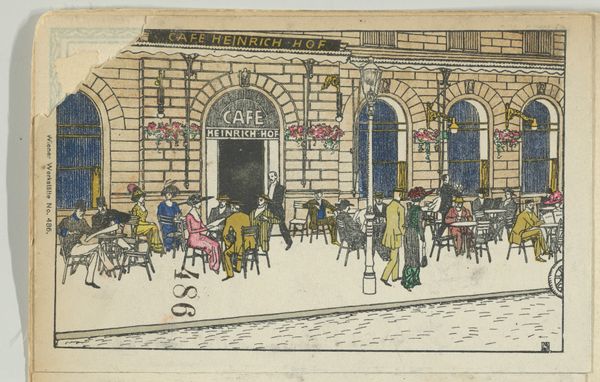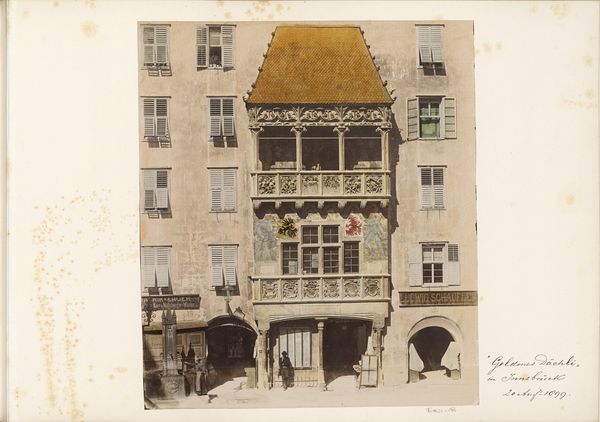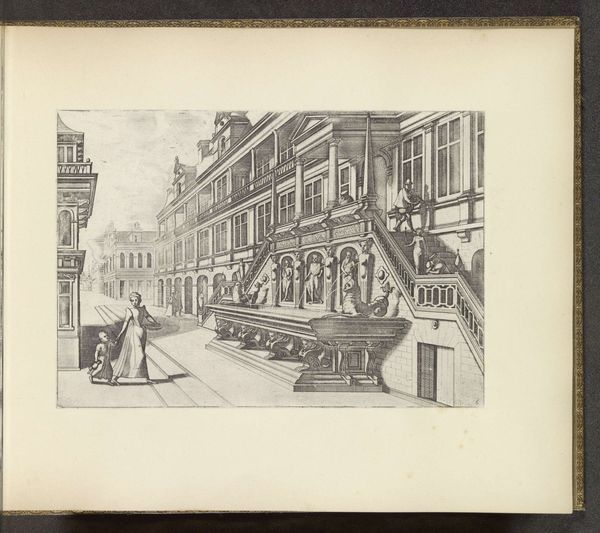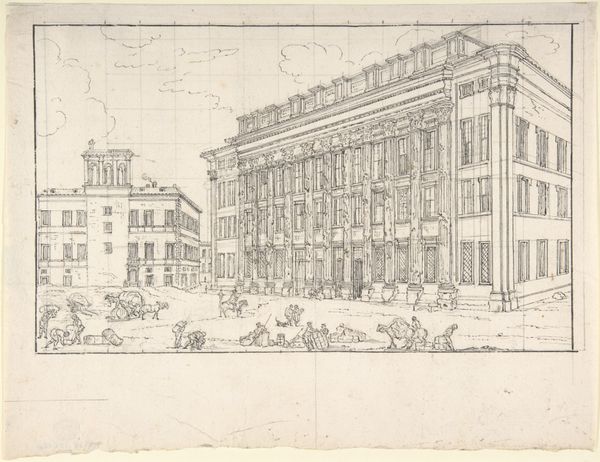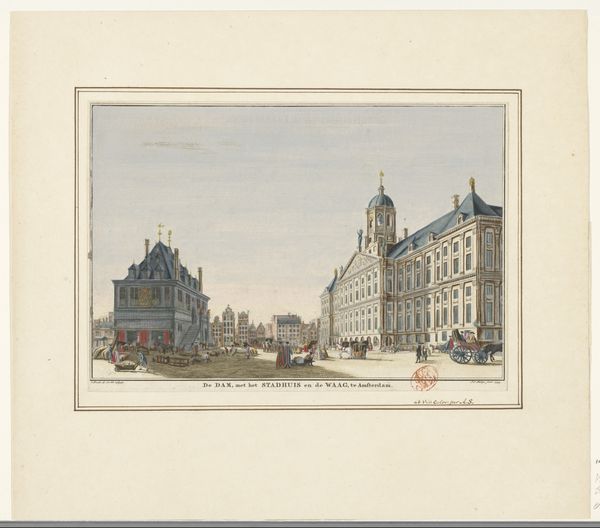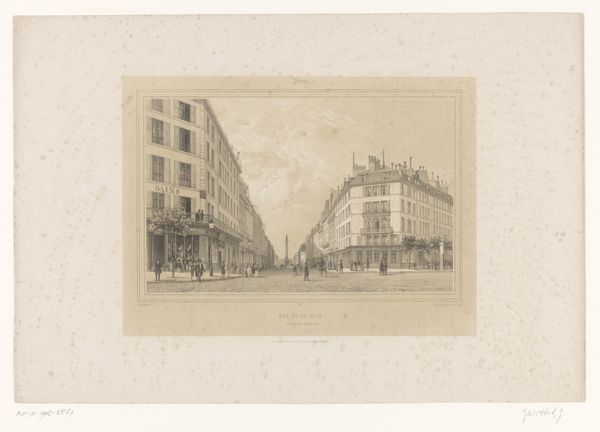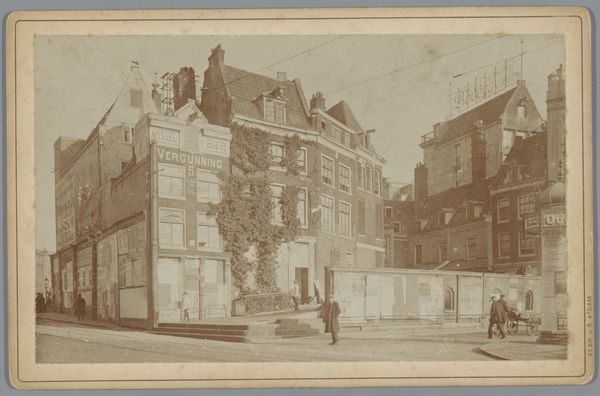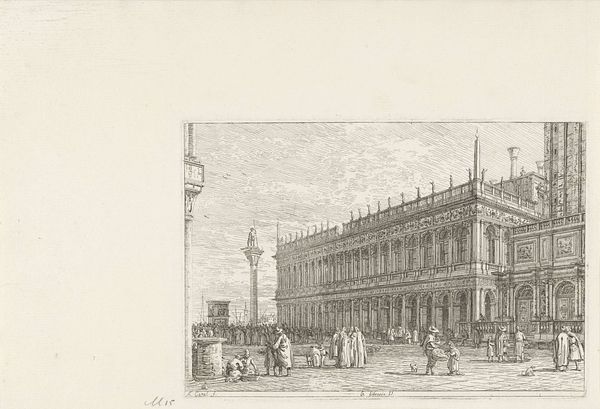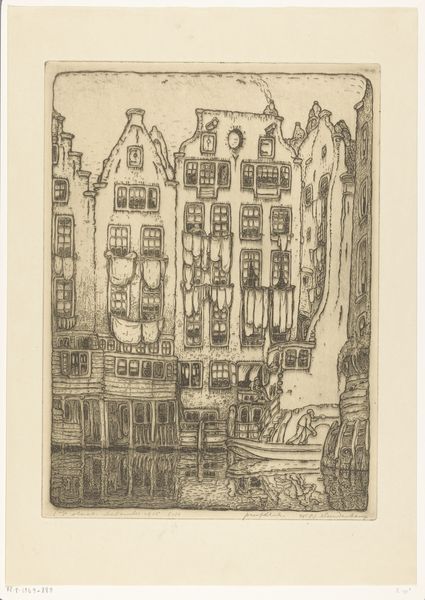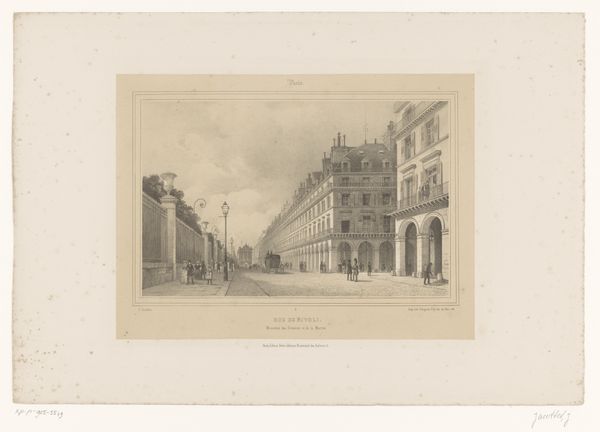
drawing, print
#
drawing
#
art-nouveau
# print
#
cityscape
#
street
Dimensions: Sheet: 5 5/8 × 3 5/8 in. (14.3 × 9.2 cm)
Copyright: Public Domain
Curator: Here we have a chromolithograph entitled "L. Steger, Successor to Café J. Scheidl" crafted by Gustav Kalhammer around 1912. It depicts a Viennese cityscape in the Art Nouveau style and it is on view here at The Met. Editor: It possesses such interesting stillness. The crisp lines describing the architecture feel meticulously organized, yet there is an interesting tension with the organic movement of figures populating the scene. Curator: Kalhammer’s artistic production coincided with a vibrant period of change in Vienna, specifically concerning commercial space and society. This lithograph comes from a set of postcards, offering visual documents of the shifting urban landscape. It reflects the growth of café culture and, consequently, the ways in which the emerging middle classes constructed and performed their identities. Editor: The choice of chromolithography provides the architectural surfaces with flat planes, sharply delineated with dark contour lines. It amplifies the crispness of the façade, but somewhat diminishes the sense of depth and perspective. Note also, however, how this works to flatten the figures—drawing similarities between buildings and their occupants. Curator: Absolutely, especially with regards to how the lithographic medium captured aspects of the era. One of the really appealing facets of these printed materials from the Wiener Werkstätte is how they were both documenting and shaping taste and experience through the design itself. Editor: Considering the limited color palette, it's rather striking how the light is handled. The awnings hanging from the café create patterns of light and shadow, segmenting and giving rhythm to the geometry of the facade. There is such a feeling of tranquility. Curator: It’s interesting to think about how that peace resonates or conflicts with the social forces pushing through Vienna at the time. So much industrialization, cultural experimentation. Did he perhaps attempt to provide consumers with an idealized view? Editor: I can appreciate your perspective on the artwork, which certainly provides meaningful context about how it came to be. Thank you for shining new light on it. Curator: Likewise, I hadn’t thought of how the graphic design, with the attention to light and line, could reveal that dynamic interplay so precisely.
Comments
No comments
Be the first to comment and join the conversation on the ultimate creative platform.
